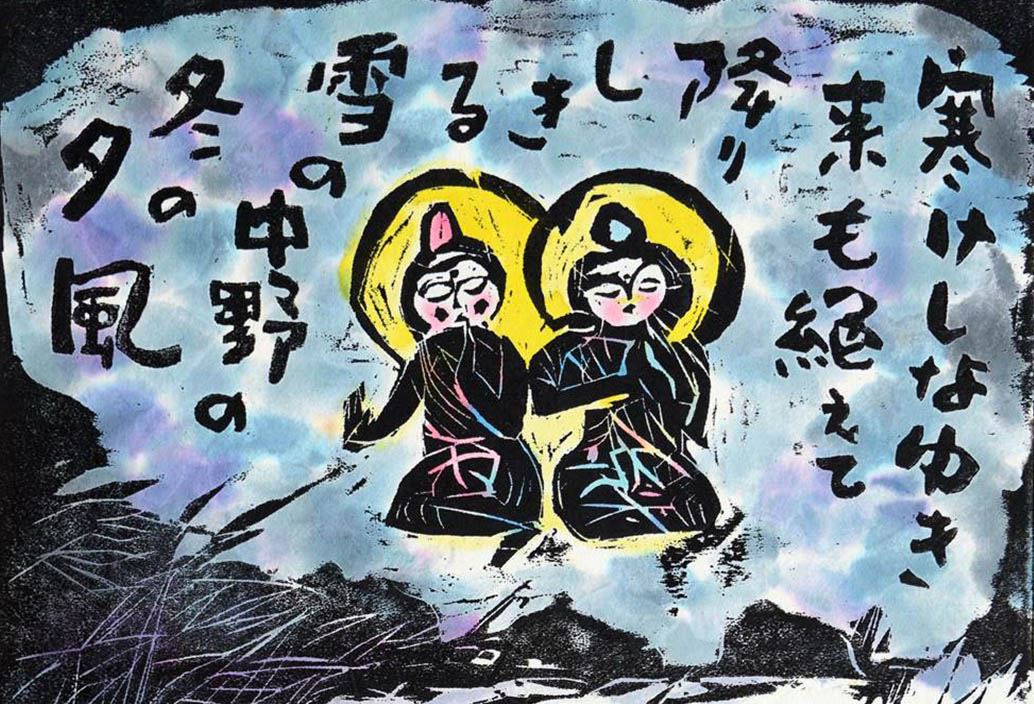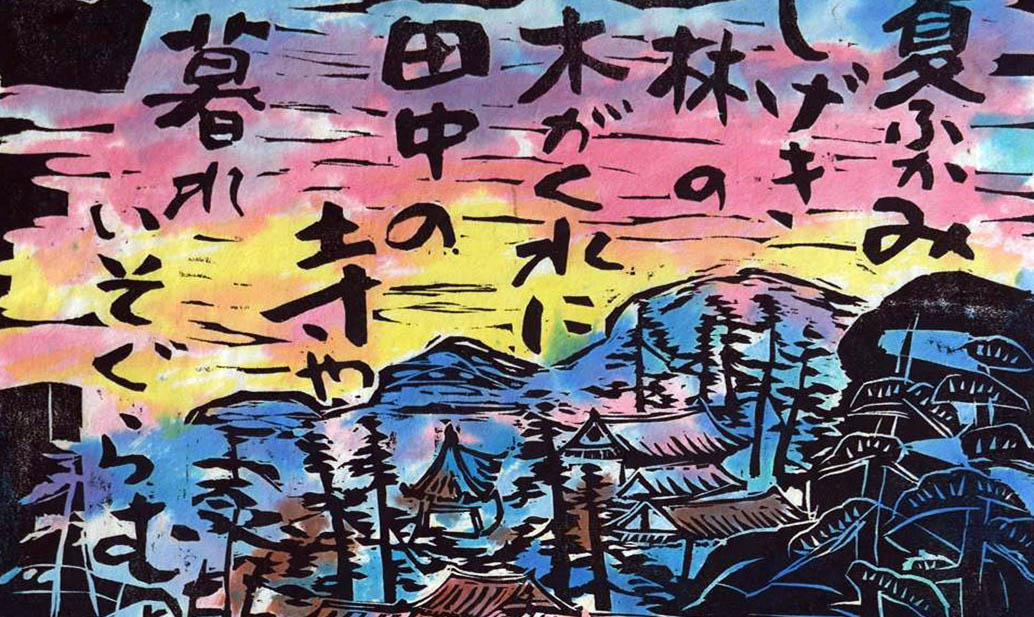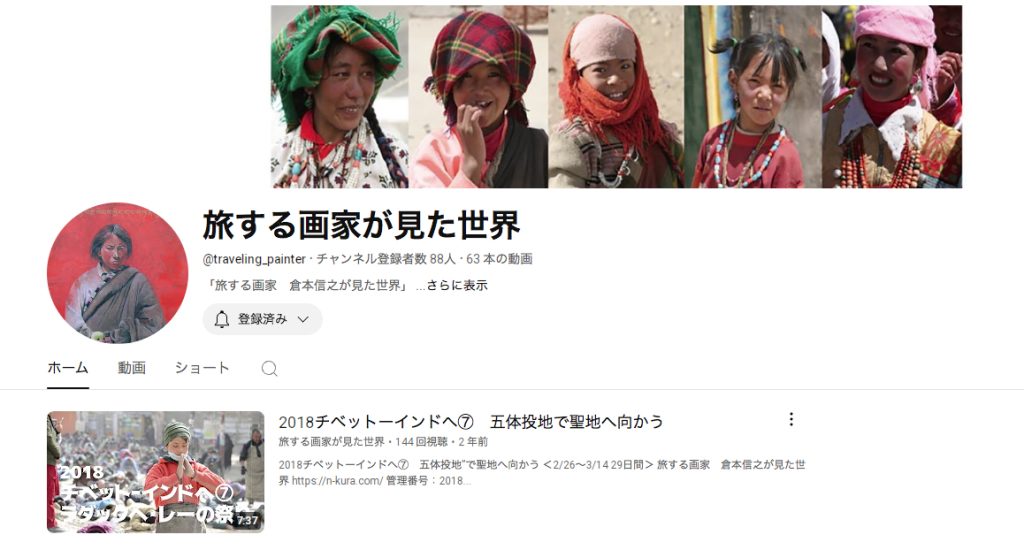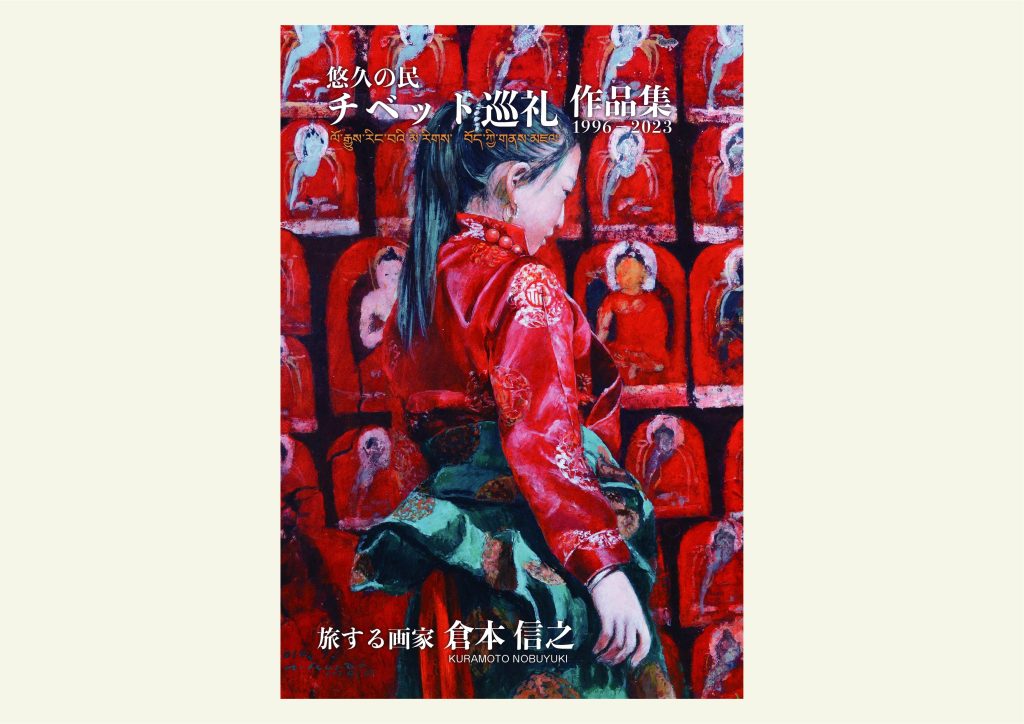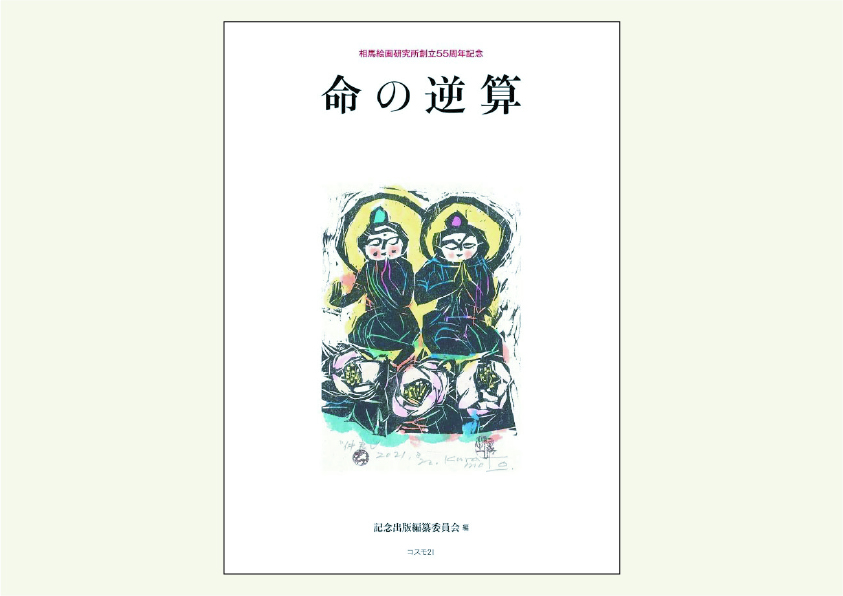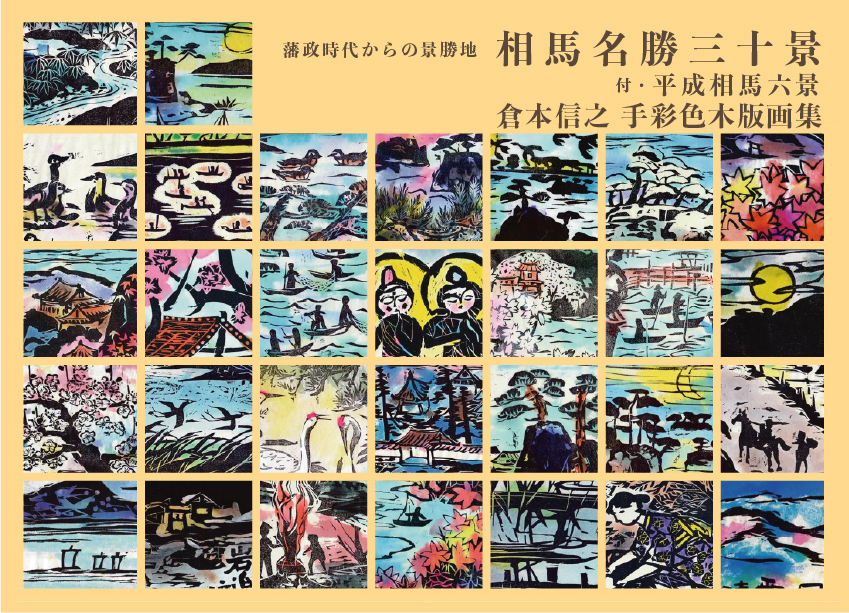旅する画家 倉本信之の世界
渡辺雄彦(宮城教育大学名誉教授)2001年発行 倉本信之作品集より
渡辺雄彦(宮城教育大学名誉教授)2001年発行 倉本信之作品集より
倉本君の今までの生きざまを見ると、経歴の示す通り、それは正に変遷の多い旅そのものであったように思う。画業に限ってみても、大きな転機の陰には、必ずといっていい程、長期間にわたる一人旅が見られる。
倉本君は1940年、福島県相馬郡飯豊村(現・相馬市)に農家の四男として生まれ、画家を志して地元の相馬高校から武蔵野美術大学に進学した。卒業後は、高校時代から師事した門馬小次郎先生の強烈な影響から自立すべく、京都で染色関係の仕事に従事しながら画業に専念する。これが、画家としての第一歩であり、倉本君の旅の始まりである。
当時の多くの若者たちがそうであったように、倉本君もアメリカンアートにのめり込み、スプレーガンを使った作品や鉄の溶接による作品づくりに悪戦苦闘が続く。しかし、やがてこれらの仕事に疑問を感じ、郷里の相馬に戻ったが、描けない苦しい日々が続いたという。
倉本君にとって大きな転機になったのは、1975年のインド、パキスタン、アフガニスタン、イラン、トルコ、ギリシャ、ヨーロッパなどへの一人旅であった。この旅で仏教に強い関心をもち、その後は仏画や日本的な主題に関心を寄せ、また旅で出会った少女たちを描くようになる。しかも、それらの表現に適した材料を求めて洋画から日本画に転じ、墨彩画も手がけるようになる。
しかし、日本画にも限界を感じた彼は、1986年にキリストに因む故地、イスラエルを中心にエジプト、アラブ地方へ長期取材の旅に出かける。そしてこの年よりアクリル絵具による制作を試み、更にアクリルと油彩、日本画の顔彩による混合技法へと発展させている。その後、1991年にピカソの作品を見にスペインに出かけ、ついでにポルトガル、南アフリカのモロッコに足をのばす。1993年には中国シルクロードへ、1994年には内蒙古の奥地バダンジリン砂漠、曼荼羅山から山西省各地を旅している。1996年にはインドネシアへ、1999年には内蒙古大学美術学院での講演。そして再び内モンゴルから蘭州、ゴルムドを旅し、世界の尾根と言われる崑崙山口、唐古拉山口を越え、念願のラサへと長期間の取材旅行を続ける。
旅を続ける倉本君が自ら「旅はある意味で自分自身を発見するものだ。環境もまるっきり違い、言葉も通じない異境の地でぎりぎり追い詰められて、本当の自分、裸の自己を見つけられるような気がする」と云っている通り、倉本君にとって旅は厳しい自己確認なのである。
そして旅の成果を個展という形で更に確認しているのである。作品の中で特に異郷の少女を主とした人物像には心打たれる。そこには、対象に対する深い想いと自己探求の真髄に裏打ちされた心理描写と実在感が見られる。
好奇心と探究心旺盛な倉本君は、その実行力も伴って更に国際的な行動を続けている。中国長春・東北師範大学美術学部から客員教授として招聘されたり、前述の内蒙古大学学院客員教授、チベット大学美術学部での講演など。また、インド人青年や長春・東北師範大学美術副学部長の招聘や、数回に渡る中国・内蒙古との子供たちによる相互交流の実現などがみられる。この交流が実を結び、現在内モンゴルの娘さんを自宅に招き、地元の高校に通学させている。誰でもできるというものではない。勿論、まり子夫人やご家族の協力なしには出来なかったのは云うまでもない。
倉本君は初めから公募展を好まず、自己に忠実に個展やグループ展で作品を発表してきたが、大自然の中で生き、子供たちの中で生き、世界を巡り歩く彼の生き方にとって最も適した方法であったと思う。
今後も健康に留意され、更に飛躍されることを期待したい。
The World of Nobuyuki Kuramoto, a Traveling Painter
I was informed that Mr. Nobuyuki Kuramoto would publish a collection of his work of art and, at the same time, would hold the exhibition of his work selected by himself from his accumulated works in commemoration of his sixtieth birthday.
So far as I observe his life up to now, I think his life is a checkered journey itself, as his career shows. In the field of his painting as well, there was almost always a long and lonely journey before his big turning point.
Mr. Kuramoto was born as the fourth son of a farmer at Iidate-mura, Soma-gun, Fukushima-ken (Soma City at present) in 1940. He proceeded to Musashino Art University from Soma High School in his native town, as he wished to be a painter. After he graduated from the university, he devoted himself to painting while he was engaged in the business of dyeing in Kyoto to be independent from the strong influence of Mr. Kojiro Monma, who had been his instructor since his high school age. This was the first step as a painter and the beginning of his journey.
As many contemporary young artists did, he also devoted himself to American Art. He was struggling day by day to make works with a spray gun or by welding iron. Then he felt suspicious about these works and returned to his native town, Soma. But it is said that he had a hard time there, being unable to paint.
His solitary journey to India, Pakistan, Afghanistan, Iran, Turkey, Greece, and Europe became one great turning point for him. In this journey, he developed a strong interest in Buddhism. Then, he started to paint girls whom he had met during his journey, while also presenting Buddhist pictures and Japanesque themes.
Furthermore, he shifted from Western painting to Japanese painting in search of materials better suited to his artistic expression, and he also started working in monochrome ink painting.
However, as he felt a limit in Japanese painting, he went on a long trip to gather materials for painting, heading to Israel in connection with Christianity, then to Egypt and further to Arab territories in 1986. Since that year, he tried to create his works with acrylic paints and developed a technique combining acrylic, oil, and pigments used in Japanese painting.
Then, in 1991, he went to Spain to see Picasso’s works. On the way, he visited Portugal and Morocco in South Africa. He journeyed to the Silk Road in China in 1993, to various spots in Shanxi, China from Mt. Mandala, and to the Badanjilin Desert in the interior of Inner Mongolia in 1994. He visited Indonesia in 1996 and gave a lecture at Inner Mongolia Arts Academy of China in 1999. Again, he continued a long journey to gather materials for paintings from Inner Mongolia to Lanzhou, Golmud, and his long-cherished destination, Lhasa, via the Kunlun and Tanghla mountain passes, which are called “the roof of the world.”
The journey is a form of severe self-confirmation for him. As he says:
“While continuing my journey, I believe we can discover ourselves. In a foreign land, where the environment is completely different and no language is available for communication, I feel that I can find my true, naked self by being driven into a corner.”
He confirms the results of his travels through private exhibitions. I am especially moved by his portraits, particularly the girls in foreign lands. In his work, we can see psychological depth and the real presence of the subject, backed by deep affection for them and a spirit of self-inquiry.
Mr. Kuramoto, who has a curious and energetic research mind, continues his international activities with great executive ability. He has been invited as a guest professor to the Department of Arts at Northeast Normal University in Changchun, China, and to the Inner Mongolia Arts Academy. He has also given lectures at the Department of Arts in Tibet University.
Furthermore, he has arranged for the invitation of an Indian youth and the vice-dean of the Department of Fine Arts at Northeast Normal University. He has also realized mutual exchange visits between children from Japan and Inner Mongolia on several occasions. As a result of this exchange, he now hosts a girl from Inner Mongolia at his home and has her attend a local high school. This is not something just anyone can do. Needless to say, this would not have been possible without the support of Mrs. Mariko and his family.
Mr. Kuramoto has never been fond of public exhibitions. Instead, he has consistently presented his work in solo and group exhibitions, staying true to his personal vision. I believe this approach is best suited to his lifestyle — living in nature, among children, and journeying across the world.
I hope he will continue to stay healthy and achieve further artistic growth.
S15-scaled.jpg)

